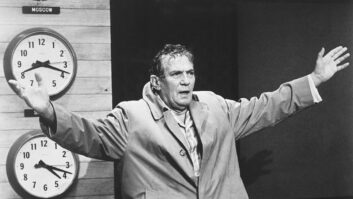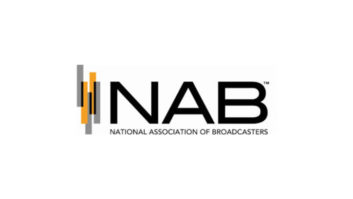WASHINGTON
The Federal Communications Commission hopes its new rule to allow the rebroadcast of AM radio programming on FM translators will not only boost coverage areas for some broadcasters but also help efforts to increase localism of broadcast content.
However, the limited universe of FM translators inevitably will curb opportunities for broadcasters hoping to exploit the rule, observers say — though in fact, at least 220 stations already have benefited.
The rules amendment, released in June, allows retransmission of AM programming on existing FM translators as long as the AM station does not extend its coverage area or drop AM service in doing so.
AM daytimers, which long have argued that their limited hours hinder local service, also will be permitted to originate programming on FM translators during hours that they are not otherwise authorized to operate.
The new rules were still pending approval by the Office of Management and Budget and publication in the Federal Register in mid-July.
The regulations allow AMs to use only licensed FM translators already on the air. Only existing construction permits for FM translators that have not expired can be used.
The commission placed no limit on the number of fill-in FM translators allowed for an AM station.
The FCC previously had rejected arguments in favor of this rules modification; but in the latest ruling it switched direction, citing increased interference levels for AM broadcasters and the need to fill service voids in their coverage areas to remain competitive in the world of mass media.
The commission recently had issued Special Temporary Authority for some AMs to rebroadcast their signals on translators. It cited the generally favorable comments of those broadcasters in its Report and Order making the change official.
‘Re-discovered local radio’
The licensee of WDXY(AM) in Sumter, S.C., told the commission in public comments that “the station’s FM translator has been a God-send for the radio station and the Sumter community.” The station had been suffering from a “poor signal and low ratings,” officials wrote.
Similarly, Alan Miller, managing partner of WRHI(AM) in Rock Hill, S.C., described the benefits of that station’s FM translator.
“In many cases listeners within our own community have rediscovered what local radio is all about. In particular, at night we are now able to give our community a good clean signal to broadcast high school football games,” Miller wrote to the commission.
The FCC granted approximately 220 STAs to AM licensees to rebroadcast on FM translators since the agency began granting such authority in the summer of 2008, according to the commission. An FCC spokesman could not determine exactly how many AM broadcasters are using FM translators now.
Industry observers say they expect there will be widespread interest from AM operators, particularly daytimers that offer no nighttime service. But some also sound a note of caution.
“As many AM stations that I feel will be interested, relatively few will actually be able to take advantage of the option,” said Bob du Treil Jr., president of engineering consulting firm du Treil, Lundin & Rackley Inc.
The number one challenge for AM broadcasters is finding FM translators that are eligible, du Treil said, citing the need for the 60 dBu contour of the FM translator to be entirely enclosed within either a 25 mile circle centered on the AM transmitter site or the 2 mV/m daytime contour of the AM station, whichever is smaller.
As of Dec. 31, 2008, there were 6,120 licensed FM translators and boosters in the United States. Observers contacted for this story said there was no way of predicting how many existing licensed FM translators could be used by AMs under the rule change, nor how many translators are licensed but currently off the air.
“Even if a FM translator is found to be eligible, the next big hurdle will be negotiating a deal for the FM translator itself,” du Treil said.
In fact, he thinks it was a disservice to AM licensees for the FCC to approve FM translators for use without providing a reasonable opportunity to obtain service.
“For the moment there is no opportunity for AM stations to apply for a new FM translator,” du Treil said, “and who knows when that window might open.”
‘One-size-fits-all rules’
The FCC has already noted that LPFMs, not translators, will have the next opportunity to apply for new spectrum. After that filing window is past, the FCC said it would revisit the issue of expanding opportunities for AM stations to use FM translators.
“The R&O is full of technical hurdles,” Sellmeyer said.
As an example, he cited “a local daytime operator who has a tight null, which pulls in the 2 mV/m contour in its local market. Maybe the station has a good signal but is hurt in the area of the null. Well, his maximum FM power will be artificially limited by that null. I think there are some significant problems with the one-size-fits-all mentality in the new rules.”
The FCC said in its Report and Order that AM audience share has dropped to 17 percent and the median age of AM listeners is 57 years old. Many observers said those are ominous numbers for AM broadcasters already facing severe economic challenges.
“It’s certainly an indication of the reality that small AM broadcasters are facing in a digital age,” said Barry Thomas, CPBE, CBNT, vice president of engineering for Lincoln Financial Media and president of the Society of Broadcast Engineers.
>AM Translator FAQ A handy checklist courtesy of Bob du Treil Jr. of du Treil, Lundin & Rackley (www.dlr.com).
Which classes of AM stations are eligible?
All classes of AM stations are eligible for a fill-in FM translator.
Are commercial and non-commercial stations treated differently?
Yes. Commercial stations are only eligible for commercial FM translators outside of the FM reserved band (below 92.1 MHz).
How do I determine if there is an eligible translator in my area?
One must first determine the AM station eligible area. This is defined as the lesser of the daytime 2 mV/m contour or 25 miles (40 km). An eligible FM translator must have its predicted 60 dBu (1 mV/m) contour entirely contained with the eligible area. Also, the FM translator must have be authorized a license or construction permit as of May 1, 2009.
What about pending FM translator applications?
Any pending FM translator applications are not eligible for the AM fill-in service.
What about LPFM stations?
LPFM stations are “non-commercial” and are, therefore, ineligible for commercial AM station fill-in. However, agreements with LPFMs are possible provided the deals comply with the “non-commercial requirements” of LPFM stations.
Can AM stations file applications for FM translators?
Not for some time. The FCC anticipates opening a filing opportunity for new FM translators, but it will not be until after a new LPFM filing window.
Can an AM station feed an FM translator by any method?
Yes. FM translators for AM stations are, by definition, “fill-in” translators. Therefore, any terrestrial facility may be used to receive the signal that is being rebroadcast.
What height/power restrictions are there?
The rules for normal FM fill-in translators apply. The maximum ERP is limited to 250 watts with no height limitation, provided that the predicted 60 dBu contour of the translator does not extend by any amount — no exceptions — outside of the AM station eligible area. However, as with all FM translators, the normal allocation requirements must also be met.
Can modifications to FM translators be filed?
Yes. FCC-defined “minor change” modifications that would allow an otherwise ineligible FM translator to meet eligibility requirements are permitted. However, such modifications must also meet the normal FCC allocation requirements.”I suspect in some ways the decision [by the FCC] was based on the economic situation. This might give troubled businesses another way to compete.”
However, there will be new expenses incurred by AM broadcasters using the FM translator option, Thomas said, either by purchasing an FM translator license or pursuing brokerage agreements. Additional equipment may also be needed for the delivery of programming.
“It’s always a challenge solved case by case, but IP codecs could be a great way to deliver programming,” Thomas said. “Off-air delivery is certainly the cheapest but risky. It’s susceptible to interference from someone running a nearby hair dryer.”
David Obergoenner, director of engineering for Zimmer Radio Group, said he expects the rules will help some AM stations a great deal. He also predicts the value of translators will increase.
“In my case, it will likely price a translator I’ve had my eye on out of our reach,” Obergoenner said.
He also speculates that interference will increase on the FM band from translators that have been dark and now will come back on the air.
“I think it will prevent some LPFM stations from getting on the air,” he said.
Few commenters opposed the rules modification, the FCC said.
The agency noted the concerns of Prometheus Radio Project, a group devoted to promoting low-power FM. Prometheus filed comments expressing concern that expanding AM service to include FM translators would take away possibilities from new low-power FM entrants.
CBS Radio argued against the change, saying the FCC’s prior reasons for rejecting cross-service translating — namely, that most AMs had no need for fill-in facilities on the FM band — remain sound.
The National Association of Broadcasters was in favor the rules modification, which will help AM stations overcome some of the technical challenges they face, said NAB Executive Vice President of Media Relations Dennis Wharton.
“AM stations broadcast some of the most localized programming in America, providing listeners with all-news, all-sports and all-talk formats focusing on community issues. We salute the FCC for recognizing the role played by AM stations across the country,” Wharton said.












